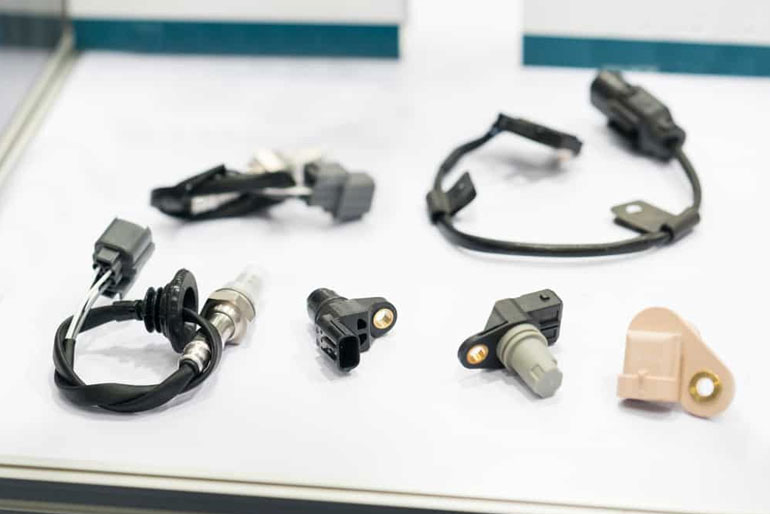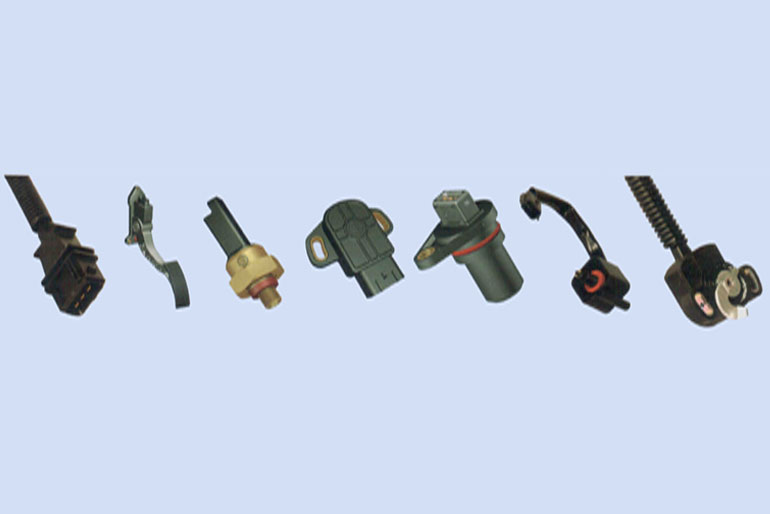If you own a modern automobile, you must be well-aware of engine sensors. In today’s time, all the latest cars have different types of sensors installed in them. Engine sensors are used to find out any vehicle related to servicing or repairing, etc.
If there is some issue with the engine, sensors are designed to solve that. Sensors installed in an automobile check the functions of the car. Usually, automobile owners have a no-to-little idea about the number of car engine sensors are installed in the vehicle.
Sensors are used to detect and resolve hidden problems that a car may be facing. The good part is that they work equally to sense any issue both outside and inside the vehicle. There are multiple kinds of sensors available in the market.

Types of Engine Sensors
Here, we will discuss the types of engine sensors and also their functionality. If you have no idea about these engine sensors used, look at the features mentioned here. Each kind of sensor is used for a different purpose that will allow you to understand whether your car is facing an internal issue.
Once you know about the car’s problem, these sensors will enable you to fix that on time. Here, we have mentioned the specific details about each kind of engine sensor to understand different sensors easily.
-
Mass AirFlow Sensor
Mass airflow sensor is one of the most famous types of engine sensors that are widely available everywhere. This sensor is installed in the vehicle engine, and you can easily control it with your laptop or system. It is pretty easy to check the air density of the engine in your system.
If this sensor stops working, you won’t drive the car until the problem is resolved. Also, your vehicle will consume more fuel if these sensors stop working.
-
Oxygen Sensor
Oxygen sensors are installed in the car’s exhaust stream next to the catalytic converter and near the exhaust manifold. These sensors are used to identify the content of the engine’s exhaust gases for the oxygen’s proportion. These sensors help you determine whether your car’s engine is consuming a rich fuel ratio or using a lean one.
Here, the engine computer utilizes this information to identify emission controls and fuel metering strategies.
-
Engine Speed Sensor
When talking about engine speed sensors, you can easily connect these sensors to the car’s crankshaft. The actual purpose of these sensors is to determine the accurate rotating speed of the crankshaft. Once you have monitored, you can easily control the engine timing and the fuel injection.
Multiple ways cause an engine to stop in the most unexpected situations. These sensors stop the car if you come across this kind of situation.
-
Spark Knock Sensor
Spark knock sensors are used to monitor whether the engine is consuming the fuel smoothly or not. If it is not consuming fuel smoothly, then it results in a sudden ignition. Ignition is quite dangerous for your car as it may cause damage to the car’s engine.
Ignition can damage the head gasket, rings, or rod bearings of the vehicle. It can be pretty expensive to fix these parts. In these kinds of cases, the spark knock sensor helps to save the car from these problems.
-
MAP (Manifold Absolute Pressure) Sensor
MAP sensors are used to determine that how much load a car engine is bearing. Usually, these sensors monitor differences in manifold pressure. It can be obtained by the car from the outside pressure to ensure that the car engine can receive fuel depending on pressure changes.
-
Coolant Sensor
Coolant temperature sensors are used to measure the temperature of the coolant mix installed in the engine. These sensors indicate that how much heat the motor gives off. These sensors work to determine the coolant temperature to ensure that the car’s engine runs at the optimum temperature.
-
Fuel Temperature Sensor
Fuel temperature sensors measure the fuel’s temperature continuously, whether the fuel utilization is optimum or not. If the engine’s fuel is cold, it will take a long to burn because of its high density. However, if the engine’s fuel is warm, then it takes pretty little time to burn.
The actual problem is varying levels of the inflow that whether the influx is appropriate or not. It can cause noticeable damage to other parts of the car. These sensors identify that whether the fuel is injected at the right speed and temperature or not.
-
Camshaft Position Sensor
Camshaft sensors are one of the main kinds of car engine sensors. These sensors are installed in the cylinder head of an engine. These sensors read the sprockets of the camshaft to monitor the camshaft position.
These details are required for functions such as injecting on sequential injection engines. Camshaft sensors send signals to the magnet valve, which is located on the pulp valve injection systems. It also controls the knock-on individual cylinders.
-
Voltage Sensor
Voltage sensors are used to manage the speed of an automobile. It helps to monitor that whether the car’s speed is at the right pace or not. It also ensures that the speed of the vehicle can be decreased or increased as required.
-
Vehicle Speed Sensor
Vehicle speed sensors are used to monitor the speed of a vehicle in the most accurate way possible. These sensors are capable of verifying the speed of the vehicle’s wheels. It is not wrong if we said that it is one kind of a tachometer.
These sensors are located in the anti-braking system known as ABS. However, the result of these sensors is also used for the odometer for reading the vehicle’s speed. These sensors are pretty good at controlling gears depending on the car’s speed.
-
Throttle Position Sensor
Throttle position sensors installed in an automobile are used for electronic fuel injection and feedback carburation. These sensors inform the computer system regarding the opening rate of the throttle and the relative throttle’s position. These sensors are good variable resistors. You can easily use them to change resistance when you see the throttle opens.
It is not complicated to determine the signs of a faulty throttle position sensor. Whenever you notice a fall when you increase the engine’s speed, this is a clear sign that you have a defective sensor. It is a significant symptom of a damaged throttle sensor. Whenever you change this, you won’t be able to adjust it properly.
Conclusion
Today, all the latest cars are equipped with multiple smart sensors. These sensors allow the driver to figure out whether the vehicle is facing any internal issue or not. Once you find out that your car expects to suffer from damage, you can quickly fix it on time.
In simple words, multiple car sensors are used for different purposes, allowing you to determine and fix the issues that your car may face. Here we have discussed the types of sensors used in a car engine and what sensor is used for which purpose. Hopefully, you find it helpful to understand.







